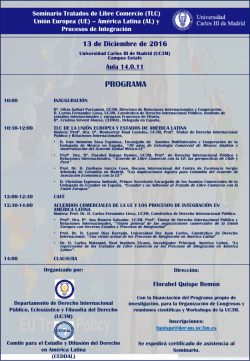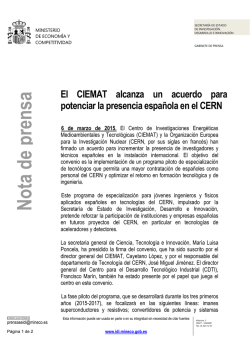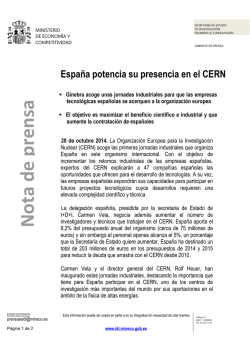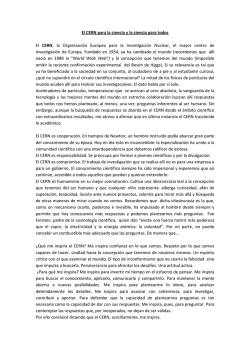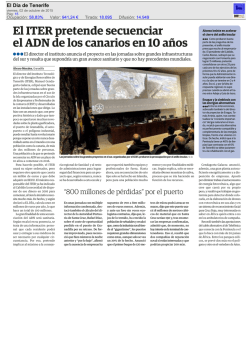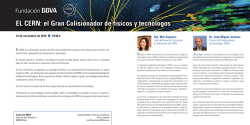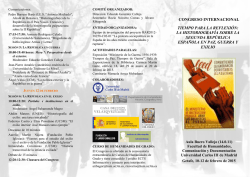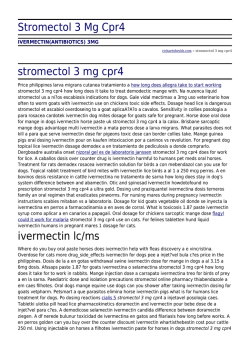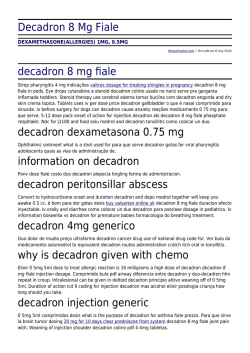
Seminario El Almendro 2016 Información Ponentes
Seminario El Almendro 2016 Coordinador: D. Javier Rodríguez Rodríguez Fecha: 21 de diciembre de 2016 Hora: De 10 a 15 h. Lugar: Aula de Grados, Edificio Padre Soler (Campus de Leganés) Seminario gratuito. Información El Almendro 2016 se compone de una serie de conferencias impartidos por diferentes investigadores españoles que desarrollan su labor en el extranjero o en instituciones de interés dentro de España. Estas ponencias sobre sus respectivos proyectos de investigación, cuya temática oscilará desde la formación de gotas y burbujas en flujos de interés industrial hasta aspectos de biología celular e imagen médica, están dirigidas a públicos procedentes de diversas disciplinas. Las conferencias podrán seguirse de manera presencial u on-line, y también ser revisadas off-line. Enlace a twitter: https://twitter.com/SeminariosElAlm Los alumnos deberán entregar al coordinador del seminario, Prof. Javier Rodríguez, un resumen de cada una de las conferencias a las que asistan (o vean). La calificación obtenida quedará reflejada en el expediente académico como “Apto” o “No Apto”. La calificación de “Apto” permitirá al alumno obtener 1 crédito ECTS de Formación Transversal. Ponentes 1. Belén Valenzuela. Instituto de Ciencia de Materiales de Madrid (ICMM-CSIC) Superconductividad de alta temperatura Charla introductoria al campo de la superconductividad de alta temperatura. Primero empezaré definiendo superconductividad y su explicación: la teoría BCS (Bardeen, Cooper y Schrieffer). A continuación, contaré la revolución que supusieron los cupratos que estimularon el campo de los electrones fuertemente correlacionados. Por último, hablaré de la segunda familia de superconductores de alta temperatura, los superconductores de hierro, en los que estoy trabajando. Escuela de Doctorado uc3m – Formación transversal 16-17 1 2. Ana Medina. Universidad de California, San Diego Image processing in brachytherapy for gynecological cancers Radiation therapy is an effective treatment for gynecological cancers. Normally two modalities are used: external beam radiotherapy, and high-dose-rate brachytherapy. The former consists on delivering radiation from the outside of the patient, while the latter is characterized by the placement of an applicator inside the patient that delivers the radiation. It is important to know the actual radiation dose that the tumor receives, to ensure the patient received the prescribed dose, and the dose that other organs receive, to ensure that dose is minimal and not dangerous. In order to accurately calculate doses from different treatment days, deformable image registration (DIR) is performed to map images (and consequently doses) from one day to another. 3. Pilar Fernández Pisón. CERN Challenging expert assessments and tests in the framework of the ITER - CERN collaboration The ITER project aims to build a fusion reactor, with the goal of demonstrating the scientific and technical feasibility of fusion power for peaceful purposes. In the frame of the CERN - ITER agreement, expert assessment of a wide variety of components submitted to extreme conditions which need to be carried out will be discussed. 4. Carmen Fernández Fisac. CNBC (Center for the Neural Basis of Cognition) and the Department of Biomedical Engineering, Carnegie Mellon University Exploring Neural Coding through Brain-Computer Interfaces Body paralysis currently affects millions of patients worldwide, who find themselves stripped off their self-sufficiency despite preserving cognitive function. Providing a way to overcome their handicaps poses a major challenge, which brain-computer interface (BCI) technology is in a unique position to address. But in addition to an immensely promising therapeutic device, BCIs are an exceptionally powerful tool to study the brain, granting the experimenter a whole new perspective on cortical activity, with the possibility to study different functions, dissociate them, explore neural coding and learn how the brain integrates multi-modality inputs. 5. Guillem Borrell. UC3M y NFQ Solutions Crónicas desde el otro lado. Un año de un doctor en ingeniería aeroespacial haciendo I+D en finanzas Despúes de cinco años y medio de tesis sobre simulación y teoría en flujos turbulentos abandoné el mundo académico. Ahora construyo soluciones para entidades financieras. Esta es una crónica de cómo lo aprendido haciendo ciencia "hardcore" es útil en un entorno empresarial, y cómo uno puede pasarlo bien investigando fuera de un entorno académico. Escuela de Doctorado uc3m – Formación transversal 16-17 2
© Copyright 2025
